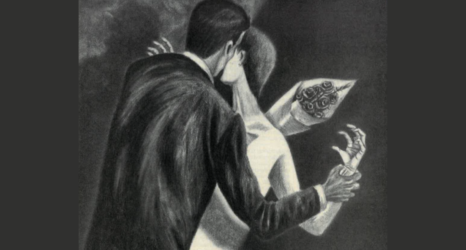Recently in Florida, a 14-year-old girl was walking down the street when a man in an SUV pulled up beside her and offered her $200 to have sex with him.
When the girl refused, he pulled her by her hair into his vehicle and choked her until she lost consciousness. Then he dropped her on the ground and ran over her multiple times, only stopping when witnesses intervened. The girl was airlifted to a hospital and stabilized. The man has been arrested and charged with attempted murder and kidnapping.
Lest you think outrageous incidents like these are an anomaly, a few weeks ago, a man in a car pulled up next to a woman running in California and offered her a ride. When she refused, he backed up and hit her not once, but twice, dragging her behind him the second time. She sustained non-life threatening injuries, and the suspect is facing charges of second-degree assault and hit-and-run.
It’s not just men in cars who harass and harm women. In Georgia, a woman was walking alone at night and three men approached her, trying to talk to her. She ignored the men and, without warning, they pushed her to the ground. Two men held her down while the third man sexually assaulted her until a passerby scared them away and helped the woman home.
These seem like extreme stories. But in a survey of 811 women, 75 percent reported they had been followed by a man they did not know, more than 50 percent had been sexually touched, and 25 percent had been assaulted. Nearly one in four of these women said their street harassment experiences began around age 12 and nearly 90 percent said they had been harassed by age 19.
Since whistling, comments such as “Hey, baby” and demands for a smile or a phone number are the most common and visible forms of gender-based street harassment, it is easy for many people to dismiss the problem.
“Get over yourself.” “It’s a compliment.” “What’s the big deal?” “If you don’t want to be harassed, don’t go outside.” These are examples of what I’ve been told for speaking out, while others, like activist/writer Soraya Chemaly, have been told to “lighten up” and that the behavior is just “flirting.”
While people may think it is a stretch to connect catcalls with assault and attempted murder, sometimes catcalls escalate into something worse and women never know when that might happen.
More importantly, both catcalls and assault are forms of entitlement. The (primarily) male street harassers believe they have the right to access girls’ and women’s bodies. They feel they can say and do whatever they want, and if women don’t comply, well, then they’re a bitch or ugly, and the men may feel justified in grabbing them, throwing trash at them, assaulting them or running them over.
As a leading expert on this topic, I’m often asked what people can do to avoid harassment. This is the wrong question. Girls and women already change their lives in myriad and often impractical ways to avoid harassment, such as changing routes and routines and even moving neighborhoods–and such tactics don’t always work.
We need to ask instead how we can stop harassers and how we teach men to stop acting entitled to women’s attention or bodies.
Here are three ideas.
- Call out, interrupt or distract friends who are harassers. Many harassers (including women) only harass in groups and they may be trying to impress their friends or get a laugh. Friends telling them it’s not funny or cool can influence them to stop. This video includes many ideas for what to say to harassers, and Stop Street Harassment’s website offers tips.
- Report and protest cultural content that encourages street harassment and assault and portrays it as OK. The YouTube channel Simple Pickups (with more than 1 million subscribers) is one example; it teaches men how to make vulgar and threatening comments and to grope women they don’t know, including such lines as, “What is the biggest c*ck you’ve ever had up your a**hole?” and “This right here means you like to have your face ji**ed on.” It’s never okay for someone to speak like that to someone without their consent. Sign this Change.org petition asking YouTube to take down the channel.
- Break the cycle of harassment and talk to kids, especially boys, about the issue. Often, when kids start out as harassers, they are mimicking what they’ve seen among male relatives or older friends, or they are trying out what they’ve seen in the media (including kids’ cartoons and online porn). Talking to them at a young age about what street harassment is and how to interact with people respectfully in public spaces without being a harasser is extremely important to help counterbalance those messages. Here are three resources to help: The Futures Without Violence program Coaching Boys into Men provides men with a playbook/toolkit they can use to talk with boys about street harassment, domestic violence and sexual violence; the Roger’s Park Young Women’s Action Team compiled their work on addressing gender-based violence with boys in the “Where Our Boys At?” toolkit; and Jake Winn, a Peace Corps volunteer and youth development facilitator in northern Azerbaijan helped his male students make an Anti-Street Harassment video as well as developing a companion lesson plan.
Street harassment is not a joke nor a compliment, and it’s time for everyone to commit to stopping it.
Photo taken from Stop Street Harassment.





